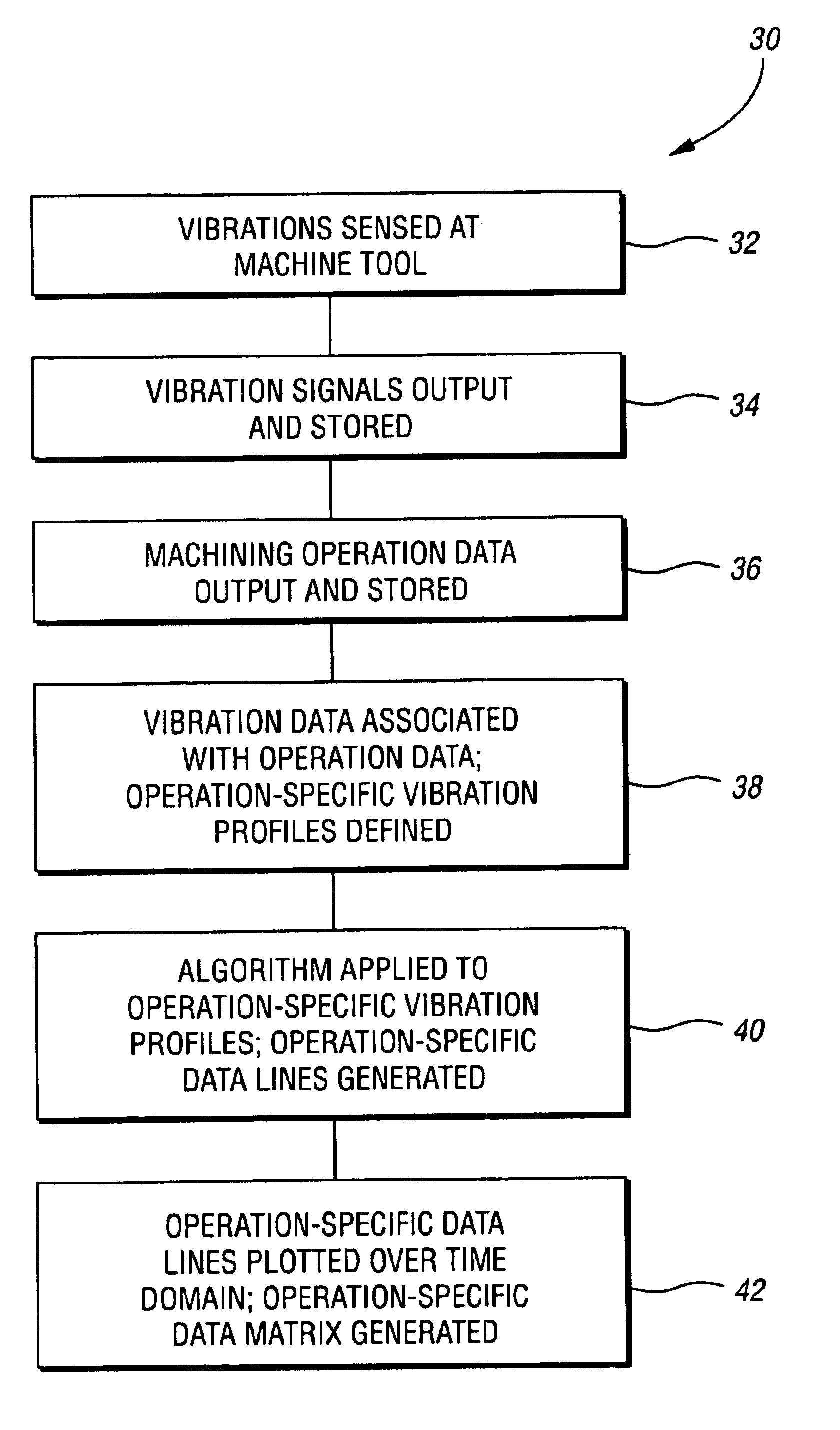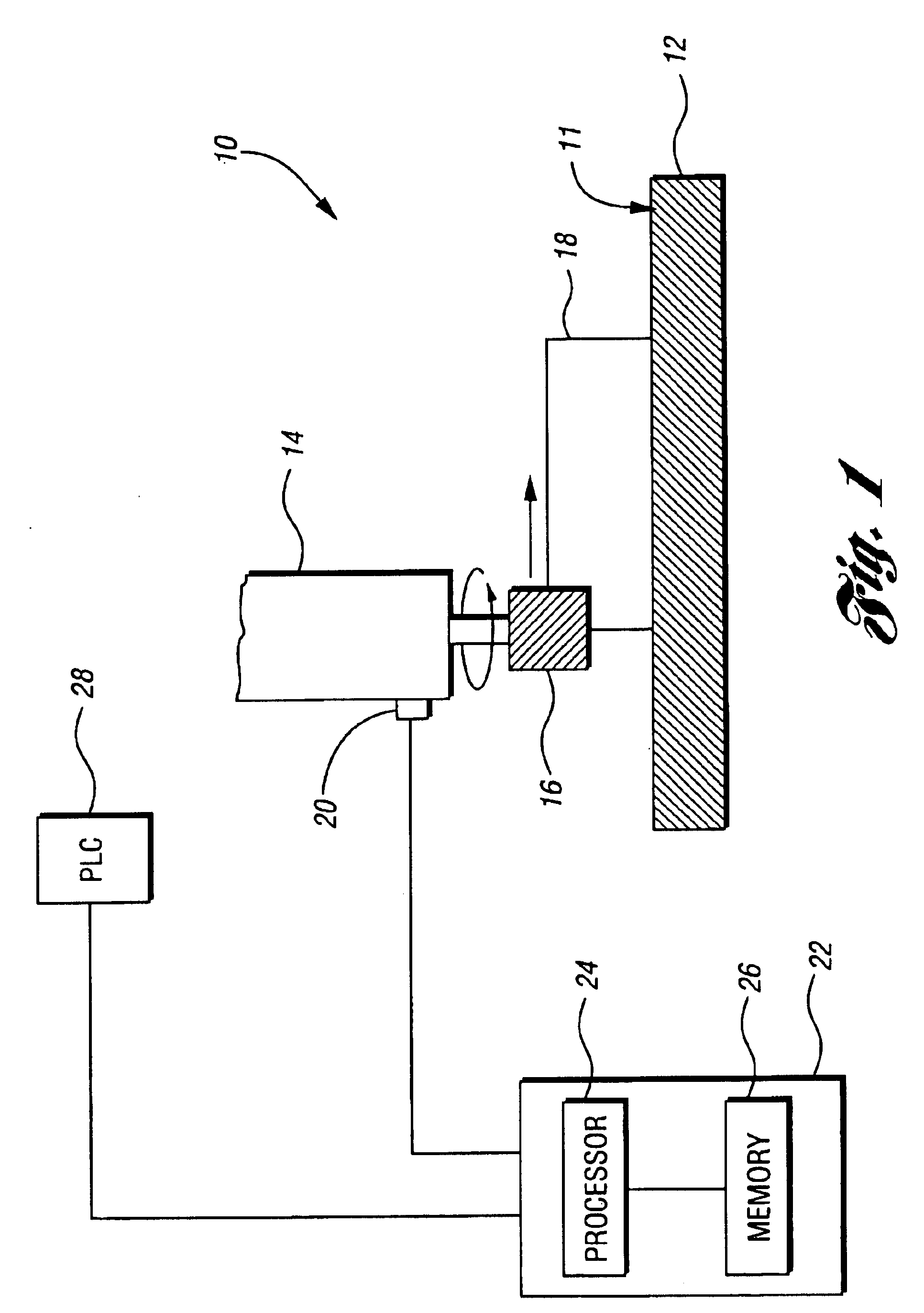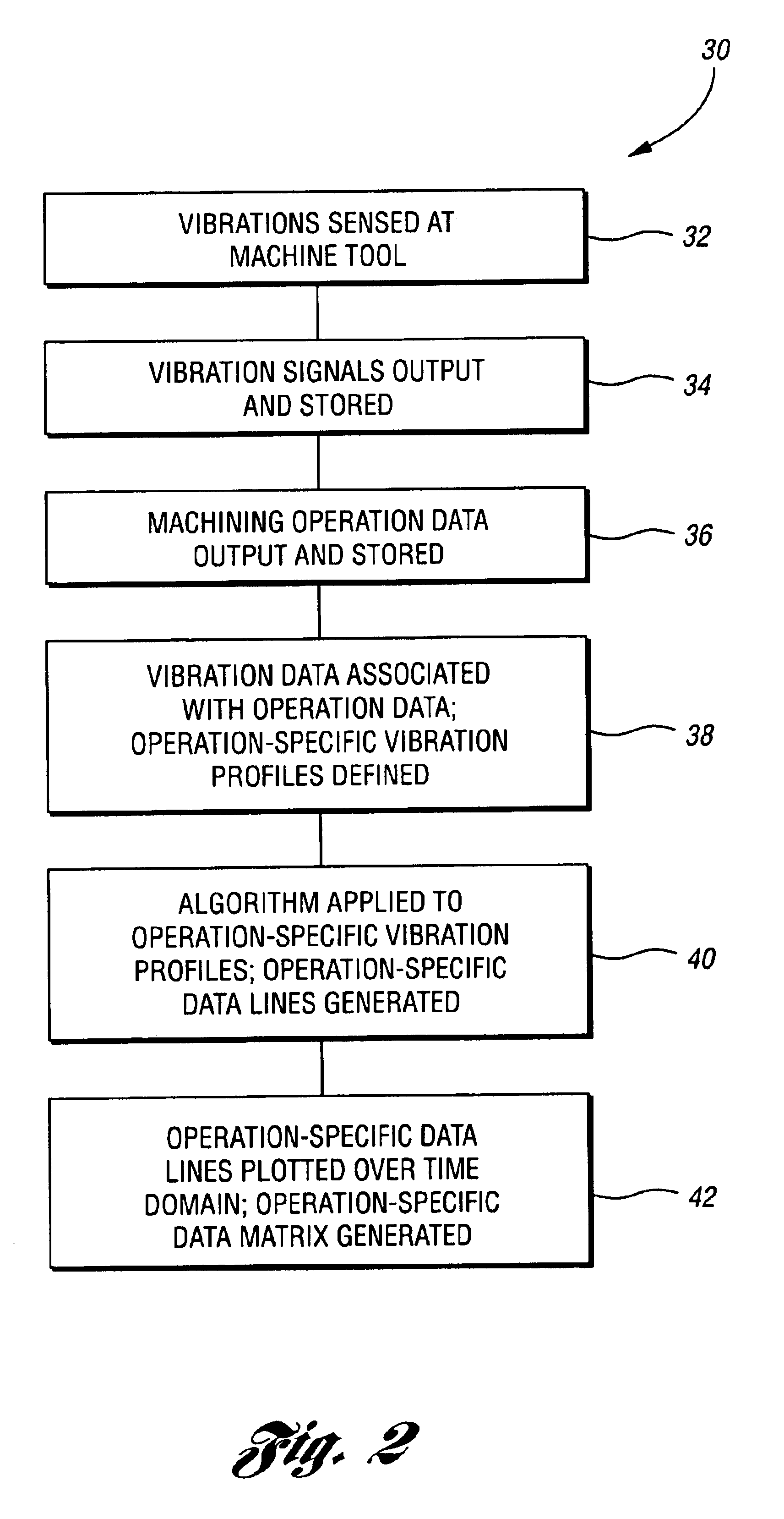System and method for machining data management
a technology of data management and machining, applied in the direction of process and machine control, program control, instruments, etc., can solve the problems of unfavorable data management, unfavorable data management, and unfavorable data management, etc., to facilitate the generation of an operation-specific data matrix
- Summary
- Abstract
- Description
- Claims
- Application Information
AI Technical Summary
Benefits of technology
Problems solved by technology
Method used
Image
Examples
Embodiment Construction
)
Elements of a data management system 10 in accordance with the present invention are illustrated in FIG. 1. A portion of a machine tool 11 includes a bed 12 and a spindle 14. Mounted in the spindle 14 is a cutting tool 16, which is used to machine a workpiece 18. Attached to the spindle 14 is a vibration sensor 20 that is configured to sense vibrations in the spindle 14 and output signals related to the vibrations to a processing unit 22. The vibration sensor 20 may be chosen from any one of a number of types of vibration sensors, such as an accelerometer, a velocity sensor, or any other suitable sensor capable of sensing vibrations.
Of course, other types of sensors may be used—i.e., ones that sense machine operation parameters other than vibrations. For example, a current sensor may be used to measure changes in the amount of current the machine tool 11 draws during various machining operations. Similarly, a thermocouple, or other type of temperature sensor, could be used to detec...
PUM
 Login to View More
Login to View More Abstract
Description
Claims
Application Information
 Login to View More
Login to View More - R&D
- Intellectual Property
- Life Sciences
- Materials
- Tech Scout
- Unparalleled Data Quality
- Higher Quality Content
- 60% Fewer Hallucinations
Browse by: Latest US Patents, China's latest patents, Technical Efficacy Thesaurus, Application Domain, Technology Topic, Popular Technical Reports.
© 2025 PatSnap. All rights reserved.Legal|Privacy policy|Modern Slavery Act Transparency Statement|Sitemap|About US| Contact US: help@patsnap.com



